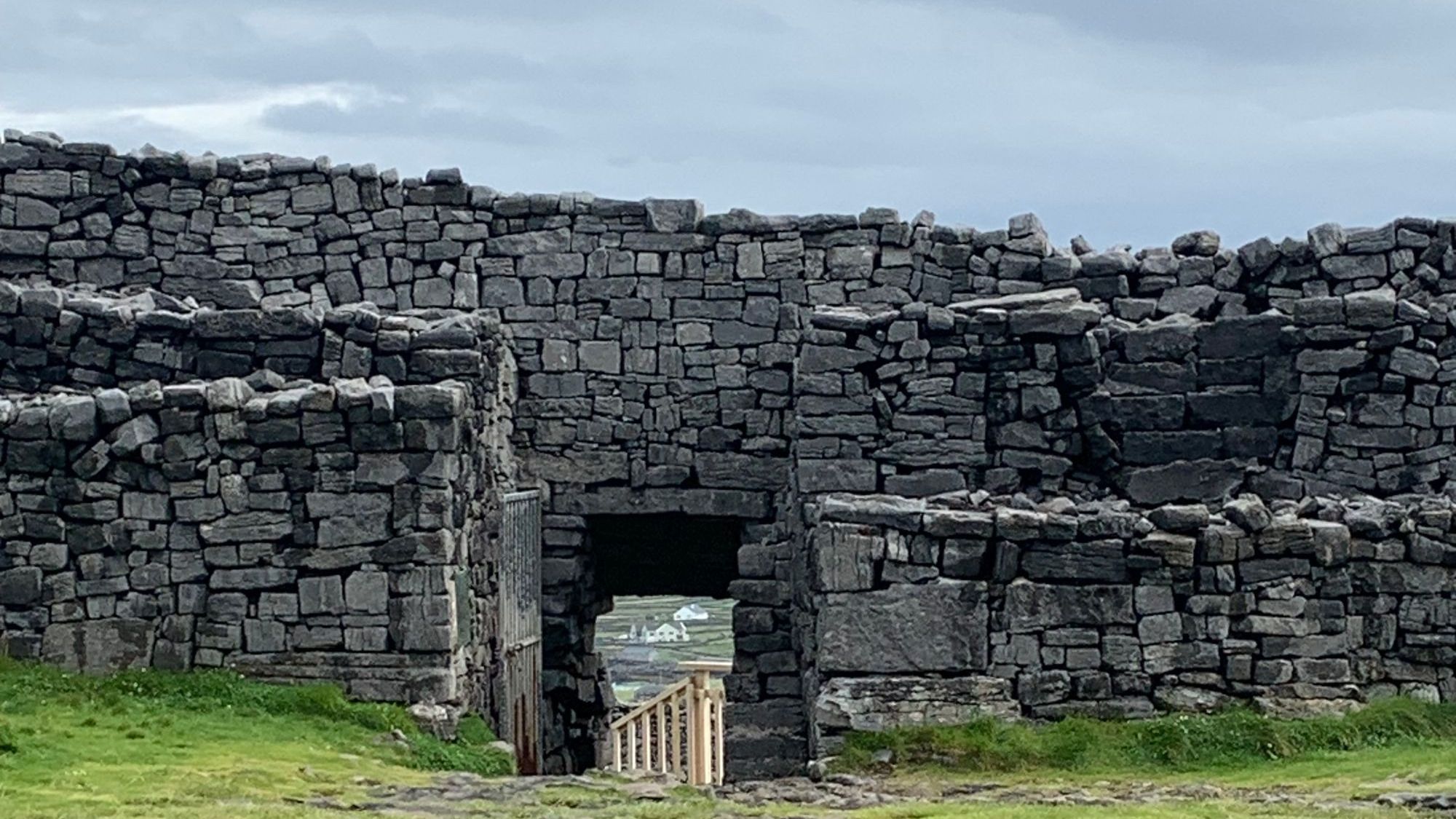A Really Good Place To Be A Climate Refugee
Ireland in August is a great place to contemplate the prospect of civilizational collapse.

Edited by Sam Thielman
INIS MÓR, IRELAND – Atop the 300-plus-foot cliff on this island west of Galway is the ruin of the fortress of Dún Aonghasa. It’s an imposing feat of masonry enclosing the edge of the cliff in a series of concentric walls. Dún Aonghasa’s date of origin is unknown, but it was probably built a few centuries before the birth of Jesus. Nearby structures apparently date to the Late Bronze Age.
Within the walls and near the edge of the cliff stands a flat stone structure about two feet high and maybe a bit less than half the size of a basketball court. It has the aspect of an altar, though that could very well be an anachronistic misapprehension on my part. Looking out at the waters of Galway Bay from the altar-like carving within Dún Aonghasa simultaneously gives a sense of impermanence and endurance. The civilization the fortress protected is no more, but, millennia later, its ruins testify that, once, it was.
From the moment I walked with my family out of the Dublin airport three weeks ago I've been thinking about ecological and civilizational collapse. Ireland in August has incredible weather. It's highly changeable, capable of threatening rain for the better part of the day but only actually raining for maybe an hour, and shockingly crisp in high summer. Every day I've been here I've had to layer. Meanwhile, back in Brooklyn, my cousin told me he had to help revive someone he saw on our block passed out from the heat and humidity.
I thought about that as the sun broke out from the clouds above Inis Mòr. What will our Dún Aonghasas be? Who will be around to see them?

